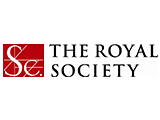
The world’s oldest continuously published journal, Philosophical Transactions of the Royal Society, celebrates its 350th anniversary today, 6 March 2015.
A gruesome account of an early blood transfusion in 1666, Isaac Newton’s historic paper on light and colour, Dyson and Eddington’s paper confirming Einstein’s theory of general relativity and Stephen Hawking’s early writing on black holes in space are just some of the landmark papers published in the Royal Society’s scientific journals over the centuries. The world’s oldest continuously published journal, Philosophical Transactions of the Royal Society, celebrates its 350th anniversary today, 6 March 2015.
As part of the anniversary celebrations, the Royal Society is publishing two special journal issues in which experts revisit landmark papers published in Philosophical Transactions to explore how they have impacted science across the globe. The special issue of Philosophical Transactions A covers papers in the physical, mathematical and engineering sciences, and the special issue of Philosophical Transactions B covers the life sciences.
Highlights in the celebratory issues include: science writer Philip Ball looking at Alan Turing’s paper ‘Chemical Basis of Morphogenesis’ on the spontaneous formation of patterns in the natural world; Nick Lane reflects on Leeuwenhoek’s first glance into the microscopic world of bacteria; Patricia Fara explores Newton’s 1672 paper which presented his new theory about light and colour; and Jim Al-Khalili takes a look at Faraday’s ‘Experimental researches in electricity’.
Philosophical Transactions pioneered the concepts of scientific priority and peer review which, together with archiving and dissemination, provided the model for almost 30,000 scientific journals today.
Landmark papers that have been published in all of the Royal Society journals include:
- The gruesome account of an early blood transfusion (1666)
- The paper that proved Einstein right (1920)
- Stephen Hawking’s early writing on black holes (1970)
- Benjamin Franklin’s account of flying a kite in a storm to identify the electrical nature of lightning – the Philadelphia Experiment (1752)
- Sir Isaac Newton’s landmark paper on the nature of light and colour (1672)
- A scientific study of a young Mozart confirming him as a musical child genius (1770)
- The discovery of a comet by the first recognized female scientist, Caroline Herschel (1794)
- Han’s Sloane’s account of inoculation with small pox (1755)
- Maxwell’s discovery of the electromagnetic properties of light (1865)
The Royal Society has also launched a series of videos to mark the anniversary. Science Stories charts 350 years of scientific publishing. In this series of short films, Fellows of the Royal Society, the researchers it funds, and the recipients of its awards discuss the stories behind some of the most famous and important papers published in Philosophical Transactions, covering big issues in science such as controversy, women in science, sustainability and citizen science. They feature scientists such as Royal Society President, Sir Paul Nurse, researcher and BBC presenter Dr Lucie Green, Professor Dame Athene Donald FRS and Professor Simon Conway Morris FRS.
To celebrate the anniversary, the Royal Society is holding a series of events looking back at the history of Philosophical Transactions of the Royal Society and forwards to the future of scientific publication. To find out more about the anniversary celebrations visit: royalsociety.org/publishing350/





















